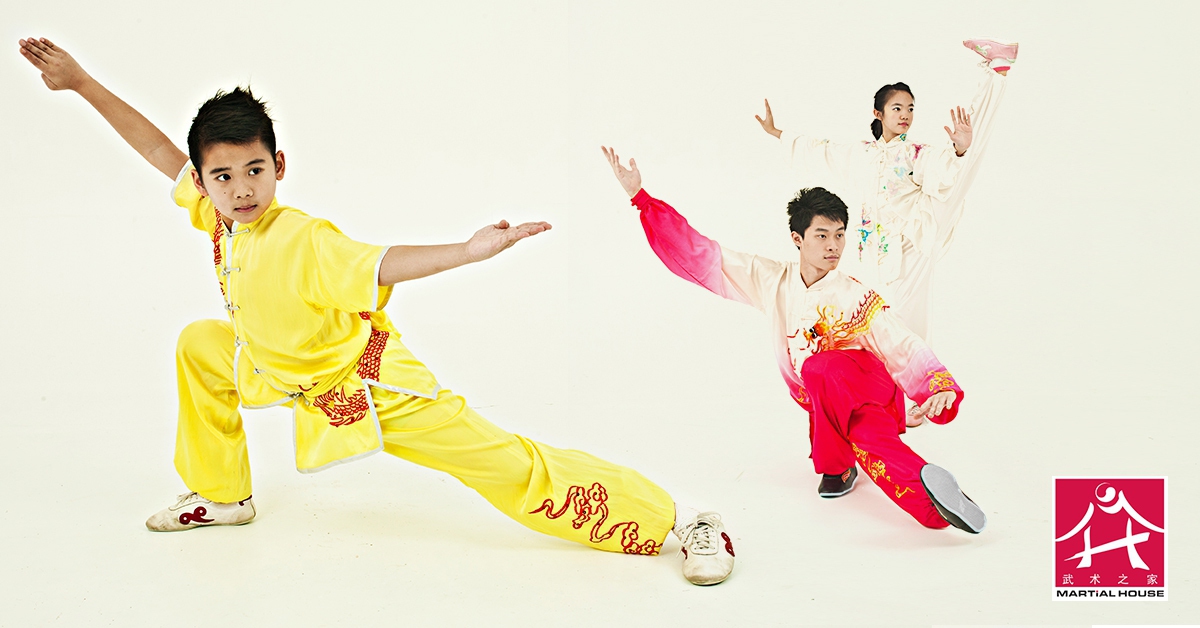 Very often, I receive feedback from students and parents about them being confused over the different types and classifications of Wushu. Hence, in this post, I shall attempt to provide an overview of the history of Wushu in a concise manner as much as possible. So, here we go!
Very often, I receive feedback from students and parents about them being confused over the different types and classifications of Wushu. Hence, in this post, I shall attempt to provide an overview of the history of Wushu in a concise manner as much as possible. So, here we go!
Wushu, otherwise known as the Chinese martial arts, is widely practised by many around the world. From a system of defence and attack, Wushu has since evolved into a form of philosophy and eventually, progressed to become a modern sport.
Today, Wushu can be classified into 2 major categories, namely:
1. “Taolu” – routine made up of a series of choreographed movements.
2. “Sanda” – duel involving combative techniques of the Chinese martial arts.
The “Taolu” category is further classified into 2 sub-categories of “Traditional” and “Contemporary”.
During the ancient days, the need for hunting, self-defence and military attributed to the birth of Traditional Wushu. Some people imitated movements of animals or subjects to develop combative techniques while others created systems of defence and attack based on philosophies and principles, contributing to the wide variety of styles in Traditional Wushu we see today.
Besides the fist routines such as the Eagle Claw, Drunken Fist, Fanzi Quan and Baiji Quan, Traditional Wushu also includes the different weapon routines such as the Long Tassel Sword, Double Broadsword, Pu Dao and Nine Section Whip.
However, for Wushu to be recognised as a competitive sport and to be included into major sporting events such as the Olympics Games, standardisation of routines, rules and regulations were required. As such, this led to the formulation of Contemporary Wushu which narrowed the diverse styles into 3 main branches of Changquan, Nanquan and Taijiquan.
The routines of Contemporary Wushu can also be sub-divided into 2 levels, namely:
1. “Compulsory” – fixed and regulated.
2. “Freestyle” – choreographed according to a fixed set of rules and guidelines.
Other than the individual fist and weapon routines which are commonly seen in competitions such as the Asian Games and the Southeast Asian (SEA) Games, Freestyle routines also include duel and group events.
With the rapid evolution and rise in popularity of Contemporary Wushu, it is often argued that the original value of Wushu is loss as athletes today tend to place more emphasis on perfecting acrobatic movements and jumps to earn high scores in competitions rather than mastering the practical applications of Wushu.
Today, this argument has remained as one of the most debatable controversial topics in the world of Wushu.
Frequently Asked Questions @ Martial House
Q1. What style and classification of Wushu does Martial House teaches?
The Martial House Wushu training curriculum focuses “Taolu”, inclusive of both Traditional and Contemporary Wushu.
Q2. What type of Traditional Wushu does Martial House teaches?
Being an affiliate, Martial House adopts the Traditional Wushu syllabus from De Wu Pugilistic Association which expose students to a wide variety of styles including Gong Li Quan, Lian Bu Quan, Cha Quan and Baji Quan.
Q3. Should I learn Traditional or Contemporary Wushu?
This depends on your training objectives. For Wushu enthusiasts who are keen to understand the practical applications of Wushu, Traditional Wushu may be your preferred choice. For aspiring athletes who aim to practise Wushu as a competitive sport, Contemporary Wushu may suit you better.
Q4. If I learn Traditional Wushu, can I also go for competitions?
Yes. There are competitions which include Traditional Wushu routines as well.




